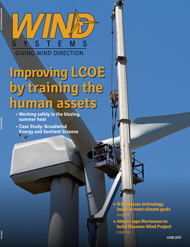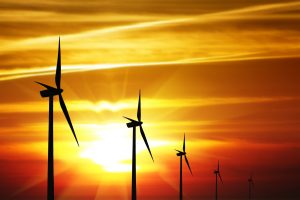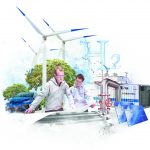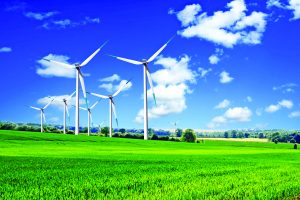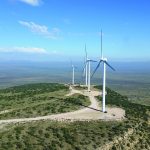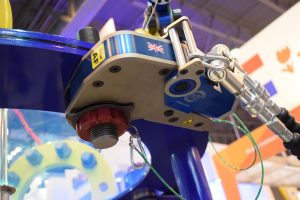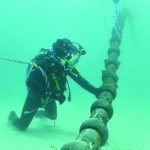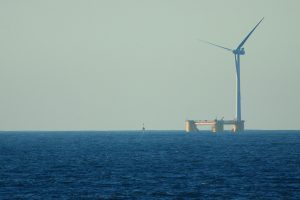When I worked for large international wind companies, like GE and Nordex, I saw entire infrastructures — engineering, EHS management, spare parts warehousing, SAP specialist, IT support, O&M schedulers, remote monitoring, process writers, etc. — created to support the operation. However, very few people actually climbed the turbines to do maintenance and troubleshooting. I have always considered the techs in the field to be the “all-stars” of the wind energy industry. But even the most experienced technicians need to be trained and re-trained on an ongoing basis. Without constant skills development, the rapid advances in wind technology will quickly surpass the expertise of even the most skilled technician.
Even the best turbine on the market — equipped with the most proven technology and boasting the longest and most reliable track record — can suffer catastrophic failures if the technician and support team don’t know what they are doing. For example, when critical failures occur, as operators we are very good at pointing fingers at sub suppliers — like gearbox and bearing manufacturers — while overlooking the obvious O&M issues associated with that component. Maybe we should ask ourselves if the root cause was our own failure to keep the drivetrain correctly aligned, or if ignoring a “too high oil temperature” alarm for several months could have caused the failure instead.
 Action at a Distance
Action at a Distance
The world’s best work instructions (usually checklists) and technical support (sometimes thousands of miles away from the turbines) only become efficient and functional if you have technicians with the right attitude and skills to execute them correctly. In my experience, the engineering and remote support personnel can only describe at a distance what they want checked or performed on site. It is up to the site technicians to understand the turbine technology well enough to finish up on site and get the issue resolved. The communication and language between the back office and the field techs must be aligned in order to maximize the efficiency of the teams. Harmonizing the understanding of technology between engineering, operations, and the site techs can only be accomplished through training, and it is vital for feeding back and forth improvements and information, which gives quicker response times.
Generation Mindset
Having the “generation mindset” to understand not only the technology, but the entire wind farm operation, is important for a technician. Understanding the business model of the wind farm and what is best for the bottom line is also important for those who are on the turbines every day, not just those in the office. Many times the technicians will make day to day decisions that can affect downtime and generation availability. For example, if there is a non-critical warning about a filter that needs changing, but the turbine is producing well with a good feed in tariff, it makes sense to wait until a lower wind day to plan the replacement. Training staff to understand ways to make decisions like this, enables them with the generation mindset.
Technicians with the true generation mindset are usually hard to find and even harder to retain since management views them as ideal candidates. Given that there is a major “brain-drain” in the U.S. power generation industry, it may be a better option to hire and train entry-level techs into the generation mindset.
 Developing Our Human Assets
Developing Our Human Assets
Technicians are taking on a huge responsibility when working on a multi-million-dollar power production facility. It isn’t fair for a company to send a worker to these highly automated, robotic power plants and expect them to be just “arms and legs” on-site. The reality is that they have to be trained and developed over many years. In doing so you are building their confidence and equipping them with the knowledge and resources to do their jobs — for years to come. It’s often difficult for those in the wind industry to clearly see how developing their “human assets” will have a direct and quantifiable return on investment.
In such a low-margin and reactive industry as wind, the idea of spending money on training technicians (beyond safety requirements) seems like an afterthought. In order for this industry to mature and take its place with other worker-centric industries we have to address the workforce development component.
The reality is that site specific training can save money and increase performance on these assets. It has been shown that per-unit turbine performance and LCOE can be improved by teaching technicians how to operate, maintain, and troubleshoot the turbines in the most efficient way.
 Condition-Based Training
Condition-Based Training
As far as I know, the only place that uses a methodology of “condition-based training” is the Danish Wind Power Academy, an independent training organization from Middelfart, Denmark. I think that this concept is so unique and effective that it is worth sharing.
The process starts by uncovering the need for training at a particular site. This is done by analyzing the site performance for one year and deriving the top-10 downtime errors. Afterward, a skill-set analysis of the staff and technicians on site is done either through self-evaluations or testing. The training is then customized around the “skills gap” of the operators as compared to the needs of the turbine. This training plan may include classroom, online, and on-turbine training. Most of time spent on the project is analysis and development. Only about 25 percent of the time is spent in actual training — whether in a classroom or on the turbines. There is also a continual learning component, where the instructors will follow the progress and changes (personal turnover) on-site to track progress in the O&M skills.
 Case Study: Condition-Based Training
Case Study: Condition-Based Training
This “Condition-Based Training” has been a proven and successful technique for over a decade with various wind owners and operators around the world. For example, when the Danish Wind Power Academy set out to work with E.ON Climate & Renewables on its Papalote and Champion sites in Texas, the company was looking for an improvement in per-unit performance on over 460 MW of assets. The project included training the operational staff: risk, asset, operation, site management, lead techs, and assistant techs. The training was done with turbine-specific theory classes and with on-turbine training. The classes focused on the top downtime errors for each particular site and how to quickly fix or mitigate them.
By analyzing the performance before and then after, it was shown that there was a marked decrease in production loss within just six months after training. By optimizing the techs’ skills towards what the turbine needed, the unplanned outage loss was minimized and the maintenance downtime was reduced. This type of team-based training also helped to boost morale on site, synchronize communication between teams, and contribute to employee retention.
Conclusion
In this new industry, it is important not to confuse technology for technicians. Even with the advancement in turbine technology, optimization techniques, and SCADA analytics, the turbine never performs better than those who are tasked with maintaining them. The workers that climb each day need to keep up with the increasing complexity of the wind turbines and aftermarket improvements. This can only be done by training them both in the classroom and on the turbines.
It has been shown that by employing a “condition based training” strategy on-site, operators can focus their staff on the specific errors that cause the most downtime and address them. This methodology will also help to develop a “generation mindset” amongst the technicians on site, which will ultimately lower the LCOE and improve performance.
















